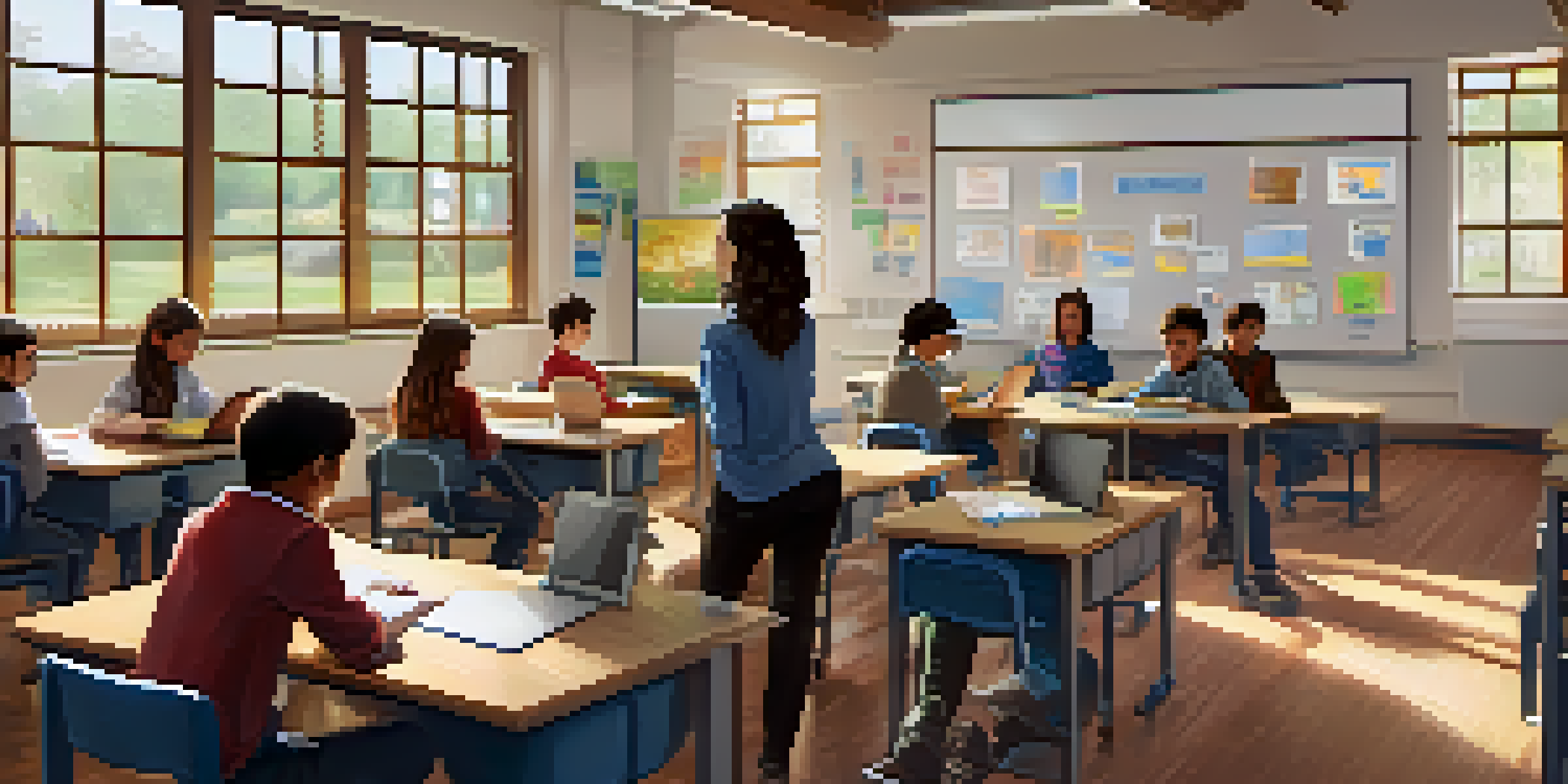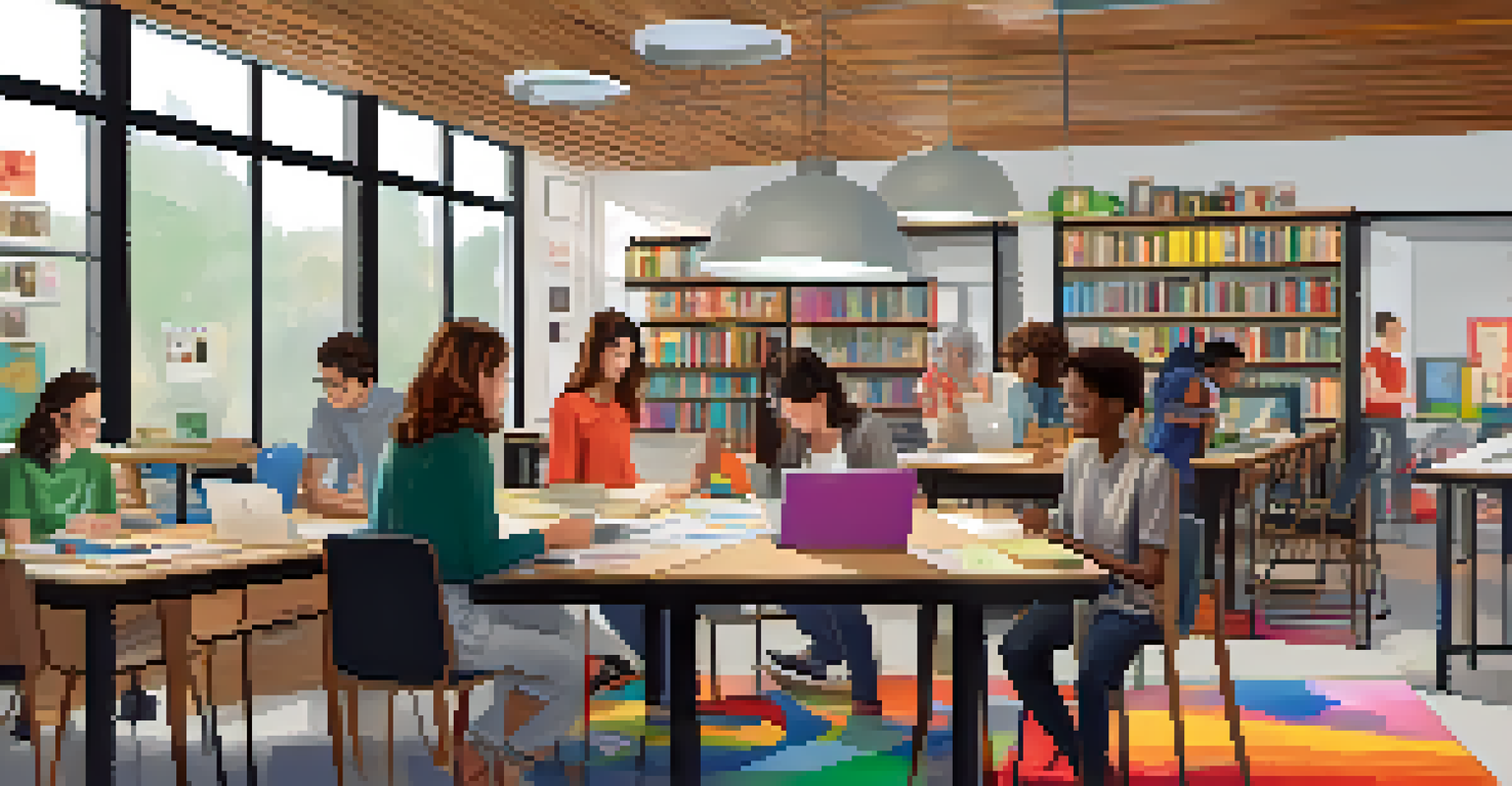Understanding Blended Assessment: A Comprehensive Approach

What is Blended Assessment and Why It Matters
Blended assessment combines traditional and innovative evaluation methods to better measure student learning. It integrates both formative assessments, like quizzes and discussions, and summative assessments, such as final exams. This approach allows educators to capture a more holistic view of student performance, addressing different learning styles.
Assessment is the bridge between teaching and learning.
The importance of blended assessment lies in its ability to provide ongoing feedback, which is crucial for student growth. By incorporating various assessment types, teachers can identify areas where students excel or struggle. This not only aids in tailoring instruction but also fosters a more engaging learning environment.
Moreover, blended assessment encourages students to take an active role in their learning. They become more aware of their strengths and weaknesses, which empowers them to seek help or resources when needed. This shift from passive to active learning can significantly enhance student motivation and achievement.
Key Components of Blended Assessment Strategies
A successful blended assessment strategy typically includes a mix of assessments, such as projects, presentations, and traditional tests. These elements work together to provide a comprehensive evaluation of student understanding. Each component plays a distinct role in assessing not just content knowledge but also skills like critical thinking and collaboration.

In addition to diverse assessment types, technology often plays a pivotal role in blended assessment. Digital tools can streamline the assessment process, making it easier for teachers to collect data and provide immediate feedback. For instance, online quizzes can be automatically graded, saving valuable time for educators.
Blended Assessment Enhances Learning
By integrating various assessment methods, blended assessment provides a comprehensive view of student performance and fosters personalized learning experiences.
Another essential component is the alignment of assessments with learning objectives. By ensuring that each assessment directly ties back to what students are expected to learn, educators can provide more meaningful evaluations. This alignment helps clarify expectations for students, guiding them on their learning journey.
The Benefits of Blended Assessment for Students
Blended assessment offers numerous benefits for students, chief among them being personalized learning experiences. Since this approach caters to various learning preferences, students can engage with the material in ways that resonate with them. For example, a visual learner may thrive in a project-based assessment, while an auditory learner may excel in group discussions.
The only way to know how well a student understands a concept is to assess that understanding.
Furthermore, students often find blended assessment more motivating than traditional methods. The variety keeps them engaged, reducing the monotony of taking tests. This engagement can lead to higher retention rates and a deeper understanding of the material.
Additionally, blended assessment fosters essential skills that go beyond academic knowledge. By involving collaborative projects and presentations, students develop communication and teamwork abilities. These skills are not only vital for academic success but are also highly sought after in the workplace.
Challenges in Implementing Blended Assessment
While blended assessment holds great promise, it also presents several challenges for educators. One of the primary hurdles is balancing the various assessment types to ensure they are fair and effective. Teachers must thoughtfully design assessments that provide accurate measurements of student learning without overwhelming students with workload.
Another challenge is the potential for technology-related issues. Not all students may have equal access to digital tools, leading to disparities in assessment experiences. Educators must find ways to mitigate these gaps, ensuring that all students can participate fully in the blended assessment process.
Technology Streamlines Assessment
The use of digital tools in blended assessment allows for efficient data collection and immediate feedback, making the evaluation process more accessible for educators and students alike.
Moreover, some educators may feel unprepared to implement blended assessment effectively. Professional development and training are crucial for equipping teachers with the necessary skills and confidence. Without proper support, the transition to blended assessment can be daunting.
How to Design Effective Blended Assessments
Designing effective blended assessments begins with clear learning objectives. Educators should outline what they want students to achieve and then select assessment methods that best align with those goals. This ensures that each assessment has a purpose and contributes to the overall learning experience.
Incorporating student feedback into the design process can also enhance assessments. By involving students in discussions about what types of assessments they find most engaging or challenging, educators can create a more tailored approach. This collaborative effort can lead to assessments that are more relevant and motivating.
Finally, it’s vital to continuously evaluate and refine assessment strategies based on student performance and feedback. Regularly reviewing what works and what doesn’t allows educators to adapt their methods, ensuring that assessments remain effective and aligned with student needs.
The Role of Technology in Blended Assessment
Technology plays a transformative role in blended assessment, making the process more efficient and accessible. Online platforms can facilitate various assessment methods, from quizzes to digital portfolios, allowing for diverse evaluation styles. This flexibility helps educators meet the needs of all learners.
Moreover, technology enables real-time data collection, providing immediate insights into student performance. Educators can quickly identify trends and adjust their teaching strategies accordingly. For instance, if many students struggle with a particular concept, a teacher can revisit that topic in class.
Challenges in Implementation Remain
Despite its benefits, educators face challenges in balancing diverse assessment types and ensuring equitable access to technology for all students.
However, it's essential to consider the digital divide when implementing technology in assessments. Teachers should strive to ensure all students have equitable access to the necessary tools. This might involve providing resources or alternative methods for students who may face challenges with technology.
Future Trends in Blended Assessment Practices
As education evolves, blended assessment practices are likely to become even more integrated with technology. The rise of artificial intelligence and adaptive learning platforms could personalize assessments further, tailoring questions to each student's progress. This could create an even more customized learning experience.
Additionally, there is a growing emphasis on competency-based assessments that focus on skill mastery rather than time spent in class. This trend aligns well with blended assessment, as it allows for a more nuanced understanding of student capabilities. Students can demonstrate their knowledge in various ways, showcasing their understanding.

Finally, the collaborative nature of blended assessment may lead to more peer-assessment opportunities. Students could provide feedback on each other's work, fostering a sense of community and shared responsibility. This not only enhances learning but also prepares students for collaborative environments in their future careers.